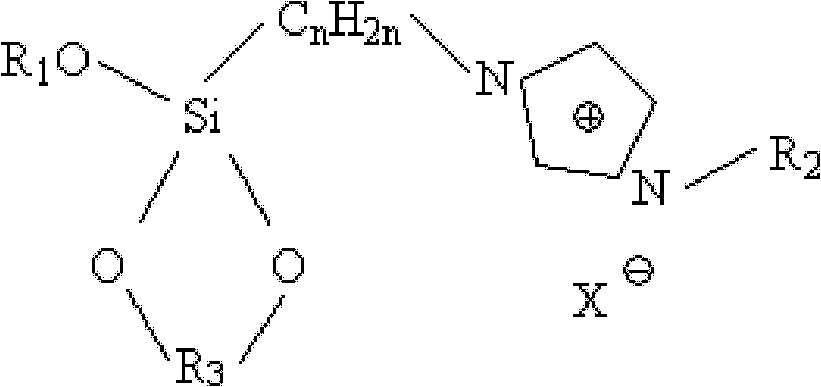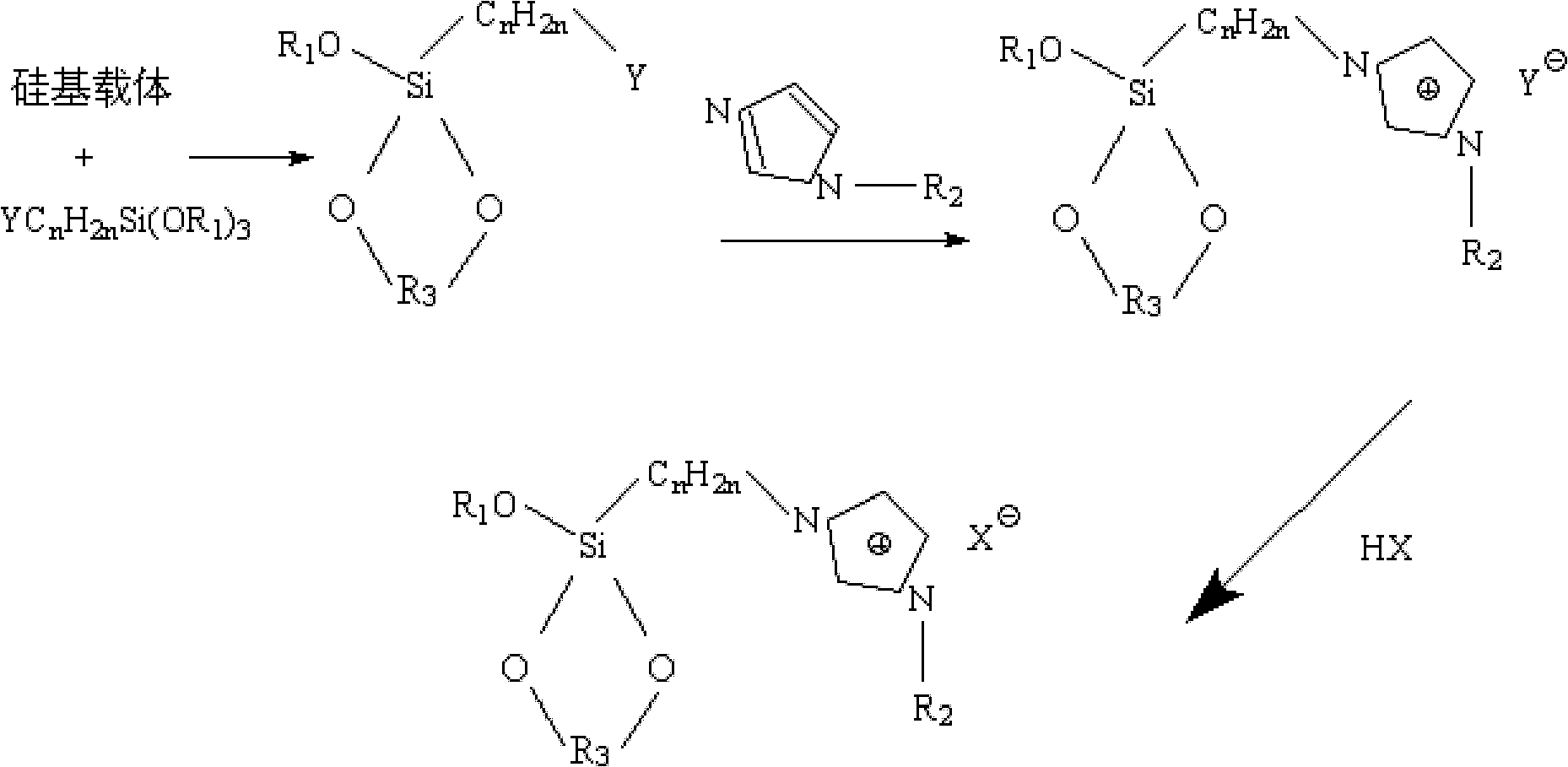Catalytic dehydration method of 4-hydroxyl-3-hexanone
A technology for catalytic dehydration and hexanone, applied in chemical instruments and methods, preparation of carbon-based compounds, preparation of organic compounds, etc., can solve the problems of low space velocity, poor catalyst activity, high reaction temperature, etc., achieve long life and avoid loss , combined with a firm effect
- Summary
- Abstract
- Description
- Claims
- Application Information
AI Technical Summary
Problems solved by technology
Method used
Image
Examples
Embodiment 1
[0021] In the presence of benzene organic solvent, the silicon-based carrier SiO 2 with silylating reagent ClC 3 h 6 Si(OCH 3 ) 3 React at 80°C for 8 hours, filter, wash, and dry to obtain a silanized silicon-based carrier. Wherein, the weight ratio of the silylating agent to the silicon-based carrier is 2.5, and the weight ratio of the organic solvent to the silicon-based carrier is 3. In the presence of benzene organic solvent, the silanized silicon-based support and N-R 2 The imidazole was reacted at 90°C for 5 hours, filtered, washed and dried to obtain the precursor I. N-R 2 The weight ratio of imidazole to silanized silicon-based support is 3 times. Precursor I was reacted with the same amount of sulfuric acid at 50°C for 5 hours, filtered, washed, and dried to obtain catalyst A, whose structural formula is as follows.
[0022]
[0023] According to the above-mentioned method, synthesize catalyst B~D respectively, its structural formula is as follows:
[0024...
Embodiment 2
[0026] The performance evaluation of the catalyst was carried out on a fixed-bed reaction device under normal pressure. A stainless steel reactor with an inner diameter of 10 mm was used, and the loading amount of the catalyst was 10 ml, and the reaction was carried out under normal pressure. The reaction product was analyzed by HP 6890 gas chromatography, hydrogen flame detector, and HP-6 capillary column (60m×0.25mm×0.25μm). The experimental conditions and reaction results are shown in Table 1.
[0027] Table 1
[0028]
[0029] *: Contains isomers
PUM
 Login to View More
Login to View More Abstract
Description
Claims
Application Information
 Login to View More
Login to View More - R&D
- Intellectual Property
- Life Sciences
- Materials
- Tech Scout
- Unparalleled Data Quality
- Higher Quality Content
- 60% Fewer Hallucinations
Browse by: Latest US Patents, China's latest patents, Technical Efficacy Thesaurus, Application Domain, Technology Topic, Popular Technical Reports.
© 2025 PatSnap. All rights reserved.Legal|Privacy policy|Modern Slavery Act Transparency Statement|Sitemap|About US| Contact US: help@patsnap.com



